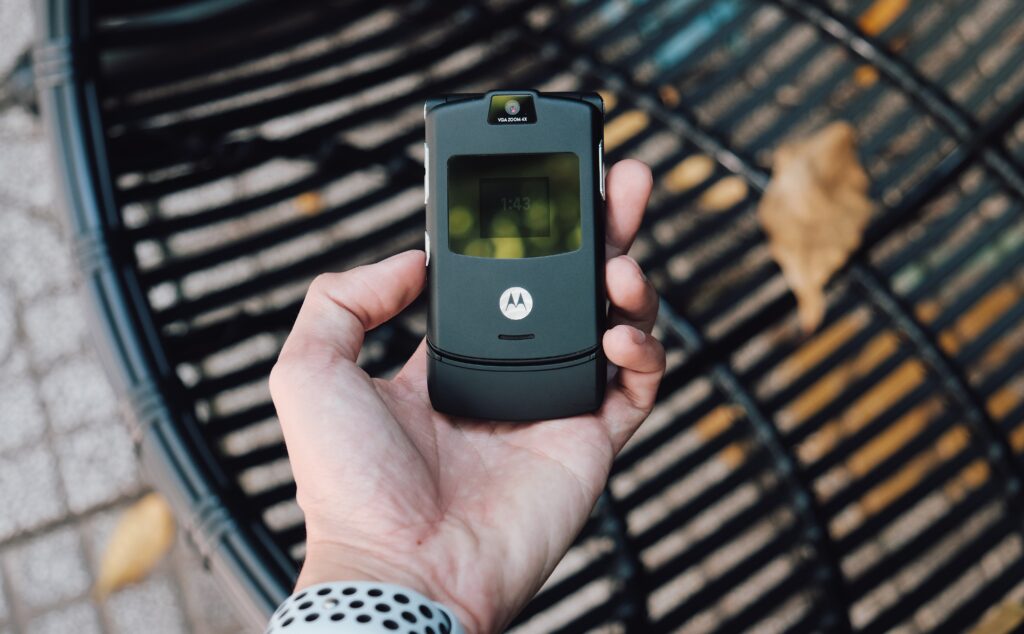The future of mobile is more exciting than you think
For many, it feels as though the glory days of mobile phones are behind us. The rapid change of handsets in the 2000s and early 2010s seem like ancient history, a revolution that has been, well, resolved.
In those days, we couldn’t move for new features or devices that upended the sector, pushing phones into places they’d never been before. Innovation was everywhere.
In recent years though, this has slowed. The industry has matured and mobile manufacturers appear to have settled into a shared design language: the shiny rectangle.
But here’s the question: is this actually the case? Has the phone industry really fallen that much? And will we be using shiny rectangular slabs forever?
Well, to find out, we spoke with Michael Fisher, a YouTuber and mobile expert based in Brooklyn, New York.
New phones: Boring or brilliant?
The first question we put to Fisher was about whether we really had reached a design plateau with mobile phones.
“We had,” Fisher tells us, “until 2019. That’s when the Motorola Razr, Samsung Galaxy Fold and Huawei Mate X were announced.”
These three types of foldable phones represented a whole new form for handheld devices. “Suddenly after almost a decade of the slab being dominant, you had not one, but three types of foldable — all of which could dynamically adjust their shape (and therefore their features) according to the user’s wishes.”
It seems there’s a competitor to the shiny rectangle after all.
Currently, two main types of foldable device have emerged. The first is the book-style model, like the Galaxy Fold. This tends to have a functional single-pane display that can open up to something almost tablet-sized.

The second type is the clamshell. Familiar to anyone who had a phone in the 2000s, this is a smaller device that flips open. The Motorola Razr is a perfect example of this sort of device. Well, the modern iteration at least.

As Fisher explains, both the book-style and clamshell models have their “own [sets] of advantages in portability, content creation and consumption, and novelty.”
Yet all this raises an interesting point. We’re in 2023, meaning foldable devices have been around for over four years. This should’ve been enough time for them to gain a large market share, but what’s stopping them from really breaking into the mainstream?
The tough road to the foldable phone takeover
When I put this to Fisher, he immediately brought up the fact that he’s seen the devices become more and more popular in recent years.
“I fly almost every week, and I watch the phones in the hands of people passing me in the aisle,” he says. Continuing, he pointed out that the “clamshell-types” of foldable phones are starting to become popular with “normal people” — rather than just tech enthusiasts and early adopters who are driving this sea change.
The reasons behind the burgeoning success of clamshell foldables, Fisher posits, is “largely based on price, and maybe a bit of nostalgia for people who still want to flip phones.”
Despite these green shoots though, Fisher believes there’s still some way to go.
Firstly, “foldables have to mature in terms of reliability.” The devices are still more likely to break or be faulty compared to regular slab phones, and until they hit parity — or at least close to it — consumers won’t adopt them en masse.
Secondly, Fisher told me that “the price [of the devices] has to come down.” While clamshell foldables are getting cheaper, many of them are still around €1,000. This is a hard sell for phones that may not last or work as well as those plentiful shiny rectangles.
Finally, there’s something Fisher refers to as “friction upon first use.” Effectively, when you check something like an iPhone, all the information you need is right there and easily accessible. With foldables, this is different, as you often have to open the whole thing up to do many basic tasks.
This needs to be solved with either “a more convenient way of opening them like a button or a larger outer display,” Fisher says. This, he believes, is coming with the next generation of clamshells. “They’ve evolving very rapidly already.”
Now we can assume foldables will dominate the near future of mobile phones, we need to look even further.
What will our phones look like in future decades?
“Mixed reality has enormous potential,” Fisher says. “Right now it’s used for very specific applications, like games or changing your appearance on a video call,” but in the future we’ll see “something built into headgear or eyeglasses that can augment your phone — and even replace it in some cases.”
This doesn’t mean handsets are going to disappear, more that we will see “the definition of mobile device shift significantly, as we no longer need to take our phones out of our pockets as often.”
In other words, the rise of digital eyewear will mean many of the small elements we use our mobiles for — like checking the weather or following directions — will shift to wearables in this category. Despite that usability shift though, it’s unlikely that this technology will replace phones for more in-depth tasks, such as sending an email.
Fisher also pointed out another company that could change how we use our phones: Humane.
He tells us that the business “is creating this wearable that lives in your pocket and projects its display onto your hand.” Continuing, he says that the “notion of disaggregating the display from your smart device — so you can see and manipulate it elsewhere — will unlock some interesting new use cases.”
Fisher sees all this pointing towards a new future for how we interact with our devices, something that was known as “the ‘Personal Area Network’ concept” in the early noughties. Currently, we carry a lot of equipment alongside our phones — think a smartwatch, earbuds, and eyewear — but these aren’t really smart. Instead, they work with the phone itself operating as a hub.
“The next phase in mobile development will be making them [every device] smart,” Fisher says, “and all equal parts of the computing equation.”
This will create a world where our phones are merely a cog in the mobile computing machine, rather than the be-all-and-end-all. Every bit of tech we carry will be capable of interacting with us independently, allowing people to choose the best tool for the task at hand.
It seems that mobile technology is a little bit more exciting than shiny rectangular slabs after all.

